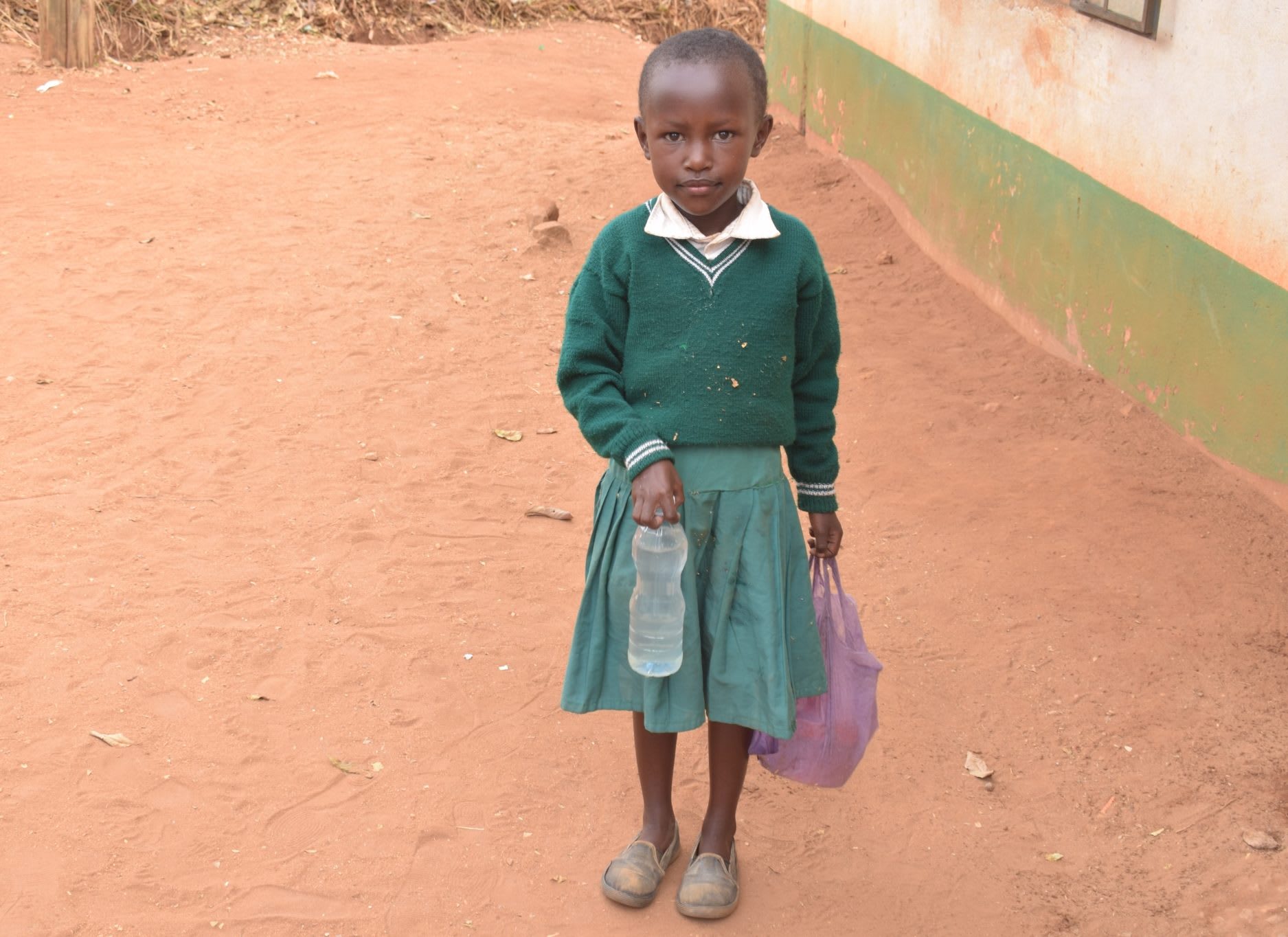AIC Mbao Primary School is located in a dry area of Kenya that is often characterized by prolonged spells of drought. Water is, therefore, a huge problem for the school as it is not often easily available.
The school depends on rainwater collected in a 10,000-liter plastic tank from an adjacent classroom's roof. The water is then highly rationed in a bid to serve all the school's needs. Even then, the water usually runs out in fewer than two months after the rains end because it is far too small to meet the needs of the 260 students and staff.
The strict rationing of the water when it is available forces students to carry water to school each day. When the tank is dry, they have to carry even more water to meet their needs and to support the feeding program at the school. The water is often sourced from open and unsafe scoop holes from the nearest riverbed. This has proven to be burdensome for the students. with rampant cases of absenteeism being reported as a result of drinking dirty water.

"We are struggling with water challenges in school," said senior teacher Agnes Mwaniki.
The school has experienced poor levels of hygiene and sanitation because of the low water supply, she said. The school has a garbage disposal pit and enough latrines to accommodate all of the students. However, the hygiene and sanitation levels at the school are below average due to the infrequency of washing their latrines.
Rainwater Catchment Tank
We will build a 104,000-liter rainwater catchment tank for this school. This water will benefit the students, teachers, and supplementary staff. Parents will mobilize the materials needed for construction, such as sand and stone. They will also lend some strong arms to help with the actual construction.
The huge capacity of this tank makes the others look tiny in comparison; 104,000 liters should be enough water to carry students and staff through the entire dry season. As soon as the tank has time to cure, it can begin to collect rainwater for drinking, cooking, and cleaning!
Training
Students and staff will be trained for one day. Those in attendance will form a school health club that will promote good hygiene and sanitation practices both at school and at home. They will learn all of the steps to proper handwashing, how to treat water, and how to keep their environment clean. The school will also be taught how to best oversee and maintain their new rainwater catchment tank and handwashing stations.
Handwashing Stations
3 handwashing stations will be delivered at the project’s completion. These are 1,000-liter plastic tanks fitted with 3 taps each. The health club and school management will be responsible for making sure tanks are filled with water and that a cleaning agent such as soap or ash is available.
About the School
The school was started by the Mbau community members in 1984 through the Africa Inland Church. It was then taken up by the Ministry of Education and it currently operates as a government school. Parents do not have to pay school fees to send their children since the school is registered as a Free Primary Education Institute.
The school is based in a rural area that is peaceful and provides a conducive environment for learning. The area is evenly vegetative and the school buildings are somewhat well maintained. Some classrooms have concrete floors while others have dirt floors.

 Rainwater Catchment
Rainwater Catchment
 Rehabilitation Project
Rehabilitation Project





























